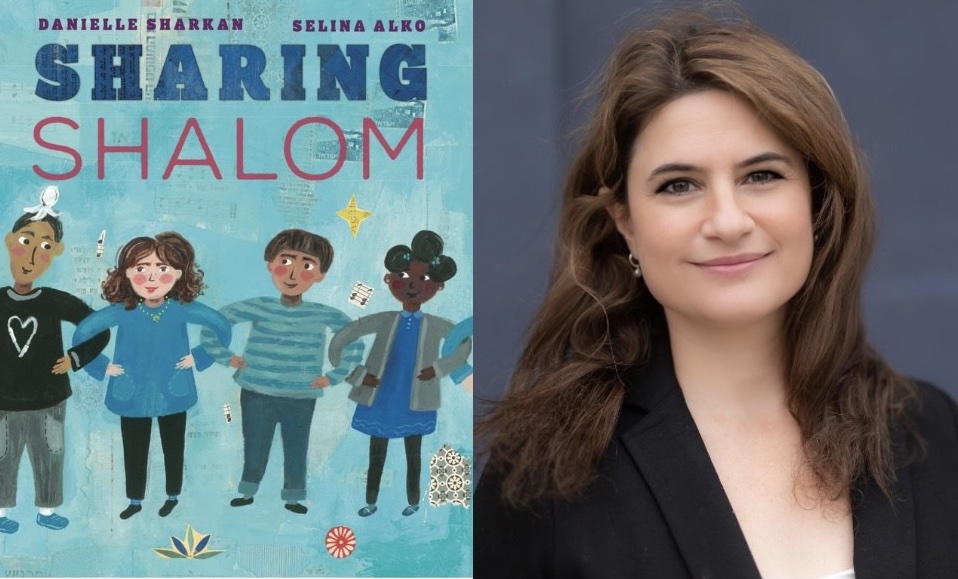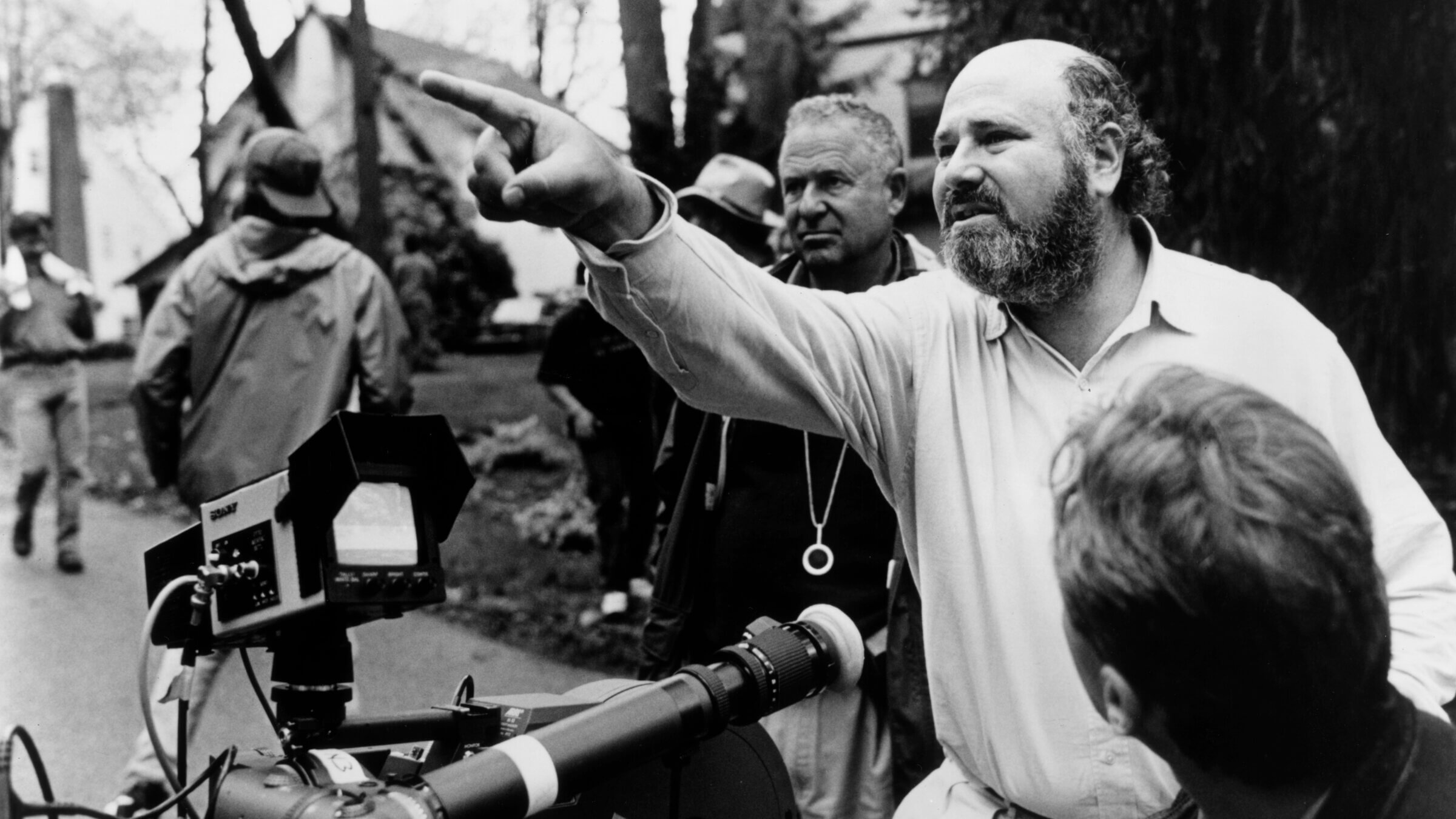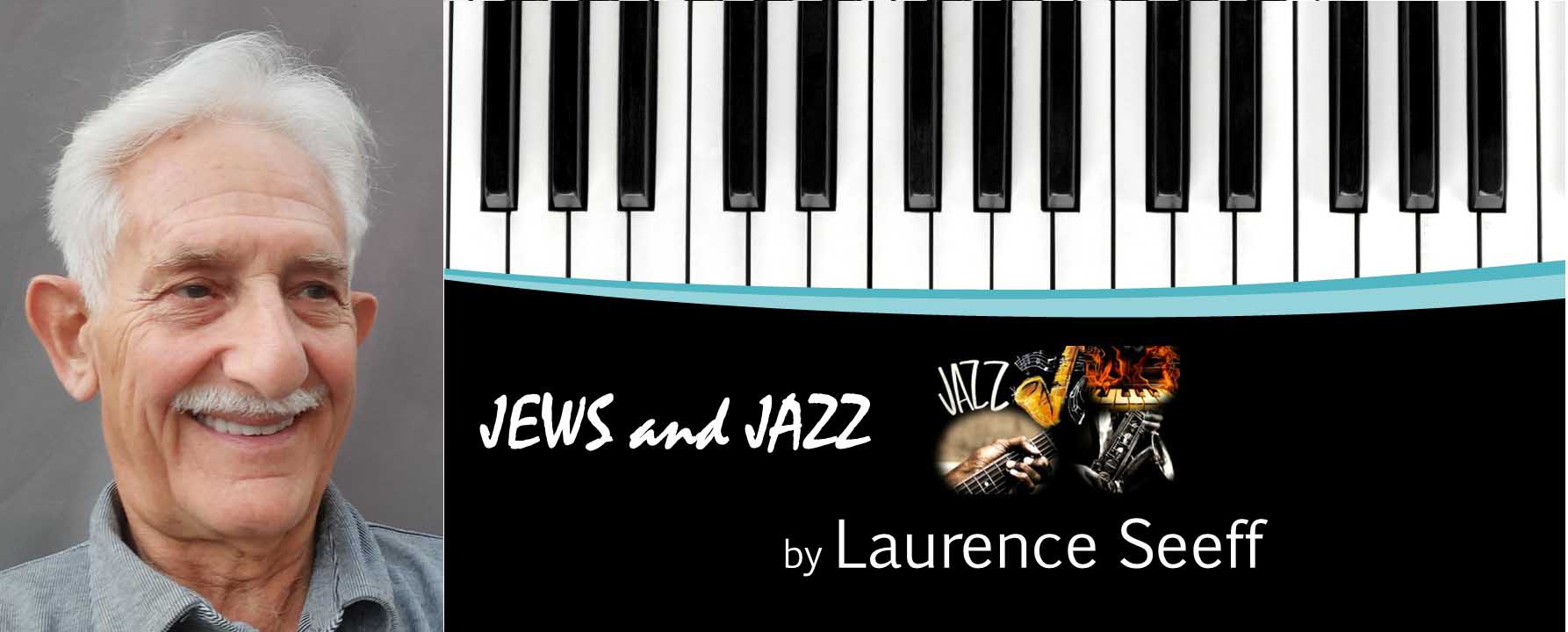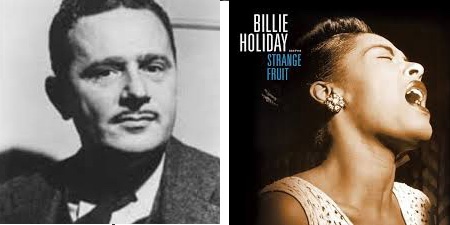Features
“Sharing Shalom” – new children’s book explores how children deal with antisemitism

While her peers dance, swim, or practice martial arts outside of class, Leila attends Hebrew school twice a week, an act that makes her feel “connected to her grandparents, her aunts and uncles,” writes debut author Danielle Sharkan.
Illustrator Selina Alko (Stars of the Night), working in collage and thick swathes of jewel-tone acrylic paint, shows faces of relatives past and present, layered with texts of liturgical music and prayers.
When Leila arrives at the synagogue one day and finds it vandalized, she’s told that “Some people think we’re different, and they don’t like that.” She worries about how she’s perceived by others, not wanting “anyone to see she was Jewish”- In her anxious state, even her bagel lunch feels like a giveaway. But the more Leila tries to blend in, “the more she noticed the way her friends stood out,” and when she sees community members helping to repair the damaged synagogue, she embraces her identity once again.
The creators address an act of antisemitism with candor and sensitivity, reassuring readers that one can belong to multiple communities without hiding one’s beliefs or identity. Characters are portrayed with various abilities and skin tones.
An author’s note and glossary conclude. Recommended for ages 4-8.
About the author: Originally from Chicago, Danielle Sharkan now lives by the foothills of the Rocky Mountains in Boulder, Colorado. When she’s not eggsploring the area with her two kids, she enjoys yoga, hiking, chai tea lattes and eggsperimenting in the kitchen. She’s eggstatic to introduce the world to Ellie the Eggspert, next March.
Sharing Shalom
By Danielle Sharkan, illus. by Selina Alko.
Holiday House, $18.99 *32p) ISBN. 978-0-8234-5556-0
Features
Rob Reiner asked the big questions. His death leaves us searching for answers.

Can men and women just be friends? Can you be in the revenge business too long? Why don’t you just make 10 louder and have that be the top number on your amp?
All are questions Rob Reiner sought to answer. In the wake of his and his wife’s unexpected deaths, which are being investigated as homicides, it’s hard not to reel with questions of our own: How could someone so beloved come to such a senseless end? How can we account for such a staggering loss to the culture when it came so prematurely? How can we juggle that grief and our horror over the violent murder of Jews at an Australian beach, gathered to celebrate the first night of Hanukkah, and still light candles of our own?
The act of asking may be a way forward, just as Rob Reiner first emerged from sitcom stardom by making inquiries.
In This is Spinal Tap, his first feature, he played the role of Marty DiBergi, the in-universe director of the documentary about the misbegotten 1982 U.S. concert tour of the eponymous metal band. He was, in a sense, culminating the work of his father, Carl Reiner, who launched a classic comedy record as the interviewer of Mel Brooks’ 2,000 Year Old Man. DiBergi as played by Reiner was a reverential interlocutor — one might say a fanboy — but he did take time to query Nigel Tufnell as to why his amp went to 11. And, quoting a bad review, he asked “What day did the Lord create Spinal Tap, and couldn’t he have rested on that day too?”
But Reiner had larger questions to mull over. And in this capacity — not just his iconic scene at Katz’s Deli in When Harry Met Sally or the goblin Yiddishkeit of Miracle Max in The Princess Bride — he was a fundamentally Jewish director.
Stand By Me is a poignant meditation on death through the eyes of childhood — it asks what we remember and how those early experiences shape us. The Princess Bride is a storybook consideration of love — it wonders at the price of seeking or avenging it at all costs. A Few Good Men is a trenchant, cynical-for-Aaron Sorkin, inquest of abuse in the military — how can it happen in an atmosphere of discipline.
In his public life, Reiner was an activist. He asked how he could end cigarette smoking. He asked why gay couples couldn’t marry like straight ones. He asked what Russia may have had on President Trump. This fall, with the FCC’s crackdown on Jimmy Kimmel, he asked if he would soon be censored. He led with the Jewish question of how the world might be repaired.
Guttingly, in perhaps his most personal project, 2015’s Being Charlie, co-written by his son Nick he wondered how a parent can help a child struggling with addiction. (Nick was questioned by the LAPD concerning his parents’ deaths and was placed under arrest.)
Related
None of the questions had pat answers. Taken together, there’s scarcely a part of life that Reiner’s filmography overlooked, including the best way to end it, in 2007’s The Bucket List.
Judging by the longevity of his parents, both of whom lived into their 90s, it’s entirely possible Reiner had much more to ask of the world. That we won’t get to see another film by him, or spot him on the news weighing in on the latest democratic aberration, is hard to swallow.
Yet there is some small comfort in the note Reiner went out on. In October, he unveiled Spinal Tap II: The Beginning of the End, a valedictory moment in a long and celebrated career.
Reiner once again returned to the role of DiBergi. I saw a special prescreening with a live Q&A after the film. It was the day Charlie Kirk was assassinated. I half-expected Reiner to break character and address political violence — his previous film, God & Country, was a documentary on Christian Nationalism.
But Reiner never showed up — only Marty DiBergi, sitting with Nigel Tuffnell (Christopher Guest), David St. Hubbins (Michael McKean) and Derek Smalls (Harry Shearer) at Grauman’s Chinese Theater in Los Angeles. The interview was broadcast to theaters across the country, with viewer-submitted questions like “What, in fact, did the glove from Smell the Glove smell like?” (Minty.) And “Who was the inspiration for ‘Big Bottom?’” (Della Reese.)
Related
- Actor-Director Rob Reiner dies at 78
- Carl Reiner On Judaism, Atheism And The ‘Monster’ In The White House
- Mandy Patinkin On His Favorite ‘Princess Bride’ Quote
DiBergi had one question for the audience: “How did you feel about the film?”
The applause was rapturous, but DiBergi still couldn’t get over Nigel Tuffnell’s Marshall amp, which now stretched beyond 11 and into infinity.
“How can that be?” he asked. “How can you go to infinity? How loud is that?”
There’s no limit, Tuffnell assured him. “Why should there be a limit?”
Reiner, an artist of boundless curiosity and humanity, was limitless. His remit was to reason why. He’ll be impossible to replace, but in asking difficult questions, we can honor him.
The post Rob Reiner asked the big questions. His death leaves us searching for answers. appeared first on The Forward.
Features
A People and a Pulse: Jewish Voices in Jazz and Modern Music

By MARTIN ZEILIG Jazz history is usually told through its most iconic names — Armstrong, Ellington, Parker, Davis — yet running alongside that familiar story is another, often under‑acknowledged one: the deep and enduring contribution of Jewish musicians, bandleaders, composers, and cultural intermediaries.
From the moment jazz emerged at the turn of the 20th century, Jews were not simply observers but active shapers of the music and the industry around it. Their influence — artistic, entrepreneurial, and cultural — has been both significant and, in many respects, disproportionately large. Jews and Jazz (171 pg. $18.75 US) a self‑published work by Laurence Seeff, brings this parallel narrative into sharp, affectionate focus.
Seeff is an ideal guide.
Born in London in 1951, he built a career that moved from statistics to energy policy in Paris, from financial markets at Bloomberg to corporate training in the City of London, all while writing poetry, songs, and humorous verse. Today he lives in Israel, where he continues to write, perform, learn Ivrit, and enjoy life with his large family. Through all these chapters runs a constant passion for jazz — a passion sparked more than fifty‑five years ago when he first heard Terry Lightfoot’s Jazzmen in a Bournemouth pub.
His writing blends clarity, humour, and genuine love for the music and the people who made it.
The musicians he profiles often came from immigrant families who brought with them the musical DNA of Eastern Europe — the cadences of synagogue chant, the urgency of klezmer, the cultural instinct for learning and artistic expression. When these sensibilities met the African American genius of early jazz, the result was a remarkable creative fusion.
Some figures, like Chico Marx, are better known for comedy than musicianship, yet Seeff reminds us that Chico was a serious pianist whose jazz‑inflected playing appeared in every Marx Brothers film and whose orchestra launched young talents like Mel Tormé. Others — Abe Lyman, Lew Stone, and Oscar Rabin — shaped the dance‑band era on both sides of the Atlantic.
Canadian readers will be pleased to find Morris “Moe” Koffman included as well: the Toronto‑born flautist and saxophonist whose “Swinging Shepherd Blues” became an international hit and whose long career at the CBC helped define Canadian jazz.
Seeff also highlights artists whose connection to jazz is more tangential but culturally revealing. Barbra Streisand, for example — a classmate and choir‑mate of Neil Diamond at Erasmus Hall High School — was never a natural jazz singer, yet her versatility allowed her to step into the idiom when she chose.
She opened for Miles Davis at the Village Vanguard in 1961 and, nearly half a century later, returned to the same club to promote Love Is the Answer, her collaboration with jazz pianist Diana Krall. Her contribution to jazz may be limited, but her stature as one of the greatest singers of all time is unquestioned.
Neil Diamond, too, appears in these pages.
Though not a jazz artist, he starred — with gusto, if not great acting finesse — in the 1980 remake of The Jazz Singer, 53 years after Al Jolson’s original. The film was not a success, nor was it truly a jazz picture, but its title and its star’s Jewish identity make it part of the cultural tapestry Seeff explores.
Diamond and Streisand recorded together only once, in 1978, on “You Don’t Bring Me Flowers,” a reminder of the long‑standing artistic ties between them.
Mel Tormé, by contrast, was deeply rooted in jazz. Nicknamed “The Velvet Fog,” he was a prodigy who sang professionally at age four, wrote his first hit at sixteen, drummed for Chico Marx, and recorded with Benny Goodman and Artie Shaw. Ethel Waters once said he was “the only white man who sings with the soul of a black man.” His story exemplifies the porous, collaborative nature of jazz.
Seeff also includes non‑Jewish figures whose lives intersected meaningfully with Jewish culture. Frank Sinatra — perhaps the greatest crooner of them all — was a steadfast supporter of Jewish causes, from protesting during the Holocaust to raising funds for Israel Bonds and the Hebrew University. His multiple visits to Israel, including a major concert in Jerusalem in 1975, underscore the depth of his connection.
Danny Kaye earns his place through his close work with Louis Armstrong, his pitch‑perfect scat singing, and his starring role in The Five Pennies, the biopic of jazz cornetist Red Nichols. Though not a jazz musician per se, his performances radiated a genuine feel for the music.
A later generation is represented by Harry Connick Jr., whose Jewish mother and New Orleans upbringing placed him at the crossroads of cultures. A prodigy who played publicly at age five, he went on to become one of the most successful jazz‑influenced vocalists of his era, with ten number‑one jazz albums.
Even Bob Dylan appears in Seeff’s mosaic — another reminder that Jewish creativity has touched every corner of modern music, sometimes directly through jazz, sometimes through the broader cultural currents that surround it.
Taken together, the concise portraits in Jews and Jazz form a lively, engaging mosaic — a celebration of creativity, resilience, and cross‑cultural exchange. They show how Jewish musicians helped carry jazz from vaudeville and dance halls into swing, bebop, cool jazz, pop, rock, and film music.
They remind us that jazz, at its heart, is a meeting place: a space where people of different backgrounds listen to one another, learn from one another, and create something larger than themselves.
For further information, contact the author at the following email address: laurenceseeff@yahoo.co.uk
Features
Jews in Strange Places

By DAVID TOPPER The Jewish contribution to 20th century popular music is well known. From Jerome Kern through to Stephen Sondheim, Jews played major roles as both composers and lyricists in the so-called Great American Songbook. (An exception is Cole Porter.) It continued in Musical Theatre throughout the rest of the century.
One very small piece of this story involves what Time magazine in the December 1999 issue called “the tune of the century.” First recorded sixty years before that, it is the powerful and haunting tune called “Strange Fruit,” which is about the lynching of black people in the southern USA. First sung by Billie Holiday in 1939, it became her signature tune.
So, why do I bring this up? Because there is a multi-layered Jewish connection to this song that is worth recalling, which may not be known to many readers.
Let’s start with the lyrics to “Strange Fruit,” which are the essence of this powerful piece:
Southern trees bear strange fruit,Blood on the leaves and blood at the root,Black bodies swinging in the southern breeze,Strange fruit hanging from the poplar trees.Pastoral scene of the gallant south,The bulging eyes and the twisted mouth,Scent of magnolias, sweet and fresh,Then the sudden smell of burning flesh.Here is fruit for the crows to pluck,For the rain to gather, for the wind to suck,For the sun to rot, for the trees to drop,Here is a strange and bitter crop.
Before becoming lyrics in a song, this poem stood alone as a potent statement about the lynchings still taking place throughout the American South at the time. The strong metaphorical imagery never explicitly mentions the lynching, which adds to the poetic power of this poem. Standing alone, I believe it’s an important protest verse from the 20th century.
Searching it on the internet, you may find the author listed as Lewis Allan. But that’s not his real name. “Lewis Allen” is the often-used pen name of Abel Meeropol, a Jewish High School teacher from the Bronx in New York. He and his wife, Anne (nee Shaffer), had two stillborn children with those names – a fact that adds a poignant element to this story.
The origin of the poem for Abel was a photograph he had seen of a lynching of black men in the South. I have seen such images, possibly even the one Abel saw: for example, a sepia photograph of two black men hanging from a long tree limb, and a large crowd of white people below (men, women and even children!), most seeming dressed in their Sunday best (some men with straw hats) looking up and gawking at the sight, some with smiles on their faces – as if attending a festive spectacle. Like Abel, I felt repelled by the picture: it turned my stomach. This communal display of horrific cruelty gave me a glimpse into Abel’s mind, and I understood how it compelled him to write about it. He thus wrote the poem, and it was published in a teacher’s magazine in 1937.
Being a songwriter too, in 1938 Abel added a melody and played it in a New York club he often attended. But here’s where this story’s documentation gets contradictory, depending upon who is recalling the events. The club owner knew Billie Holiday, and he showed the song to her. What her initial response was, we cannot know for sure. But we do know that in a relatively short time, she added it to her repertoire. It eventually became her signature tune. She initially sang it in public, but because of its popularity among her fans, there was pressure to record it too.
There were initial rejections from recording companies because of the controversial content. But Commodore Records took a chance and pressed the first recording in April 1939. This was the same year the movie “Gone with the Wind” came out; it was steeped in racial stereotyping. It was also sixteen years before Rosa Parks refused to give up her seat on a bus in Montgomery, Alabama.
As a record, the song obviously reached a large audience. Since the content was about racism, the song was seen as politically radical; not surprisingly, many radio stations banned it from the airwaves.
Furthermore, it’s also not surprising that Abel, a schoolteacher, was called to appear before a committee of New York lawmakers who were looking for communists in the schools. Possibly they were surprised to find that the poem and the song were written by a white man – and a Jew to boot. In particular, they wanted to know if he was paid by the Communist Party to write this song. He was not. And, in the end, they let him go. But shortly thereafter he quit his teaching job.
This took place in 1941 and was a precursor to the continued American obsession with communism into the 1950s, under Senator Joe McCarthy.
Indeed, that episode had an impact on Abel and Anne too. In 1953 Julius and Ethel Rosenberg were convicted of giving information about nuclear science to the Soviet Union, and they were the first married couple to be executed in the electric chair. They left two sons, Michael (age 10) and Robert (age 6). Apparently, immediate family members were reticent to get involved with the boys, possibly afraid of being accused of sympathizing with communism.
Enter Abel and Anne. Without a moment’s hesitation they stepped in, taking and raising the boys. As Michael and Robert Meeropol they eventually went on to become college professors – and naturally were active in social issues. Anne died in 1973. Abel died in 1986 in a Jewish nursing home in Massachusetts, after a slow decline into dementia. Long before that, Billie Holiday died in 1959, ravaged by the drug addition that took her life at forty-four years of age.
See why I called this a multi-layered Jewish story that’s worth telling?
To hear Billie Holiday singing “Strange Fruit” click here: Strange Fruit

